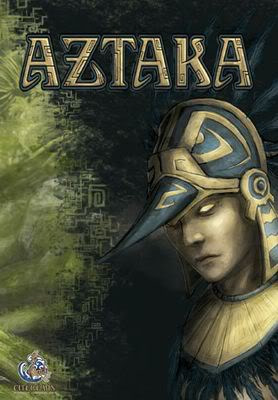Aztaka Review
-
Category: ReviewsHits: 10476

Article Index
Page 1 of 3
Aztaka is an action RPG/platform jumper hybrid, crafted by independent studio Citérémis, with a story and setting inspired by Aztec legends. It flew under the radar for most of its development period, but once released its promised unique gameplay and interesting visual style turned some heads and engendered some interest. Gameplay
Aztaka is an action RPG only in the most hack 'n slash sense of the word. It offers talents you can learn, skills you can gain and upgrade and stats you can upgrade on level-up or with items. Each of these is fairly basic in approach, there being six stats, 14 skills and 7 talents. There are no skill trees, no skills related to anything but combat, and the items are generally of a simple bonus nature, with no diversity in the sense of drawbacks or curses. Other than equipment, you will find quest items and potions, the latter giving either permanent bonuses or temporary boosts to certain skills.
There is no class system, nor does leveling up offer a lot of variation (you can increase one stat and one skill with one point per level). Instead, the game has two PCs: the main character, Huitzilo, who is a spear-wielding warrior by trade, and his companion, Ayopha, a hummingbird that provides advice and wields magic. Skills and stats are spread equally between the two, and they level up independently, both gaining experience for every kill you make.
Roughly speaking, your keyboard controls Huitzilo's actions, while the mouse allows you to cast spells, and interact with the world on certain scenarios. Casting spells happens by selecting the spell from a bar, selecting a target and then clicking a number of icons that appear one-by-one near the target, to activate the spell.
This plays out a lot less confusingly than one might think. Most of the time your focus is on Huitzilo. When you need to interact with the world you will generally not be under attack, or at least able to find a quiet spot. You will often have to jump and run around with Huitzilo while casting spells, but to help you out, the world slows down during the spell-casting process, meaning you don't have to literally do two things at one. I'm not a big fan of the spell-casting mechanic, but the combined mouse-and-keyboard gameplay works really well. A big reason it works is that Ayopha's presence is pretty thin. He can't be hurt, does not interact with the world and moves independently. As a gameplay function, they might as well have removed the bird and given Huitzilo spellcasting abilities instead, but the bird is a nice touch in presentation.
Added character and gameplay depth comes from the different energy containers. Energy is found through non-random drops that are tied to the enemy's type and level. There are four energy types; vital, divine, pure and elemental. All four are used to interact with the gameworld, as you can resurrect NPCs or open doors by feeding them energy of a prescribed type. Vital energy can be used to regenerate Huitzilo's hit points ((Solar Energy)), divine energy to regenerate Ayopha's mana points ((Divine Energy)), but both of these regenerate by themselves well, Huitzilo's regeneration being tied to one of his skills.
The interaction between the energies and the world aren't that interesting, being limited to opening doors or activating lifts for the most part. The first interaction between world and energies you're introduced to using vital energy to grow branches on trees so you can pass obstacles is probably the most interesting one.
More interesting is the way items and talents interact with the world. During gameplay, you will find a spear that allows you to break down certain doors, boots that allow you to do double-jumps, a talent that allows wall-jumps, and a bevy of talents that offer new kinds of attacks (such as attacking while jumping, or while doing a roll). This interaction between character progression and platform gaming is probably the most interesting element of the game, but its execution isn't perfect.
For one thing, it is overly linear. There's a (good) chance you won't find all the available skills, but a number of them are offered as clear story advancement devices. Items are a bit worse, as the only items that you can really pick are those in 5 jewelry slots (two for Ayopha and three for Huitzilo). Your spear, shield, armor, boots and Ayopha's main necklace are all offered in the fashion of linear upgrades.
The second problem is a bit more significant: the developers seem to believe that every gamer has photographic memory, and when once faced by an old door he can't open, will remember where it is, and will then, half a dozen stages later, realize the door-breaking spear he just picked up might just work on it. It doesn't send you back and forth like this often, but neither does it give you any hints when a newly-gained talent might match a blockade you faced earlier, and it isn't always that obvious.
Other than interacting with the world, the obvious function of equipment and stats is to allow you to better kill your opponents. The majority of talents you can gain are combat-related, but none of them will really impact how you fight your opponents, though I did discover late in the game that the jump downward-spear attack allows you to bounce up and down on your enemy's head, damaging them while they can't reach you.


